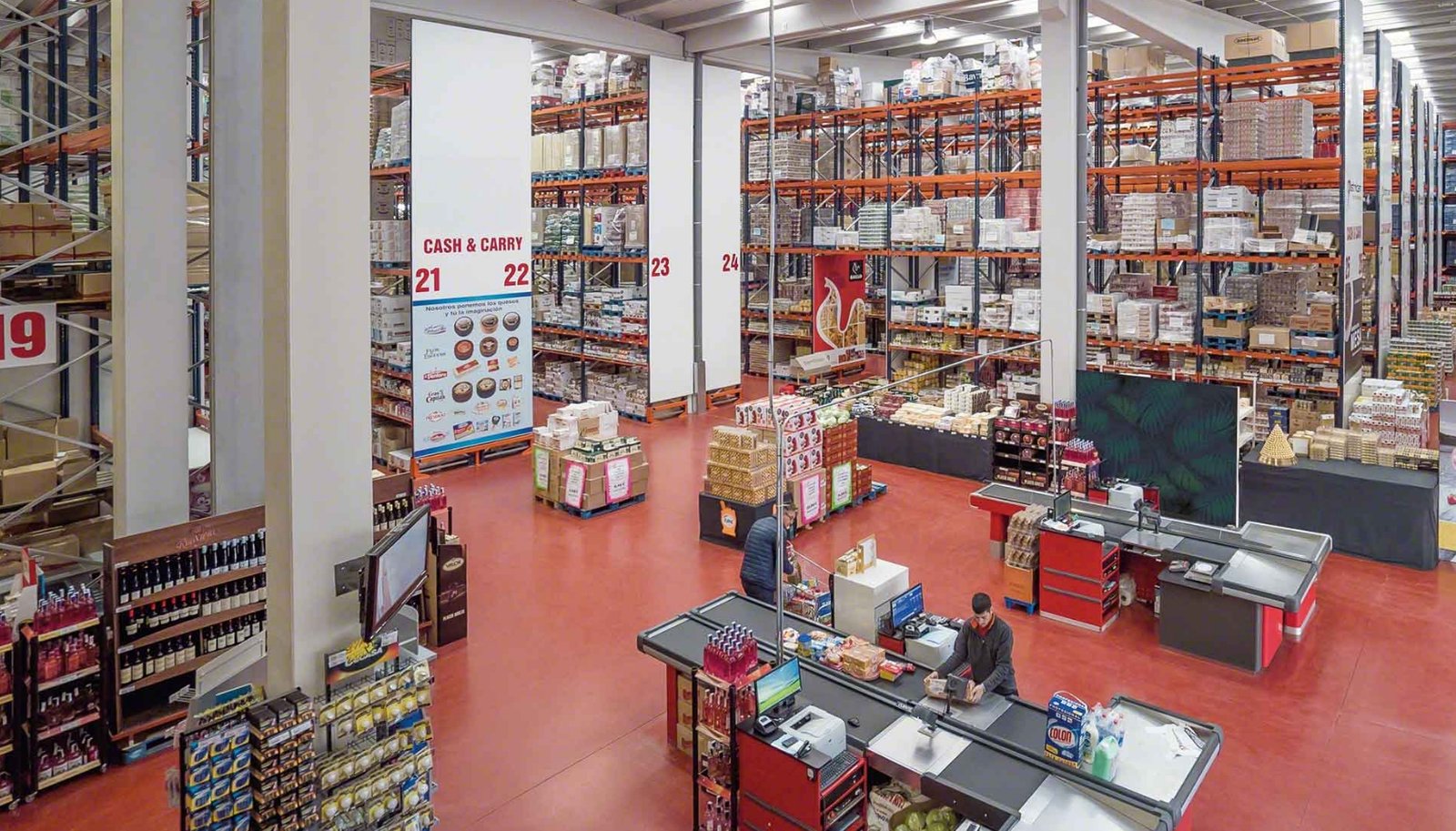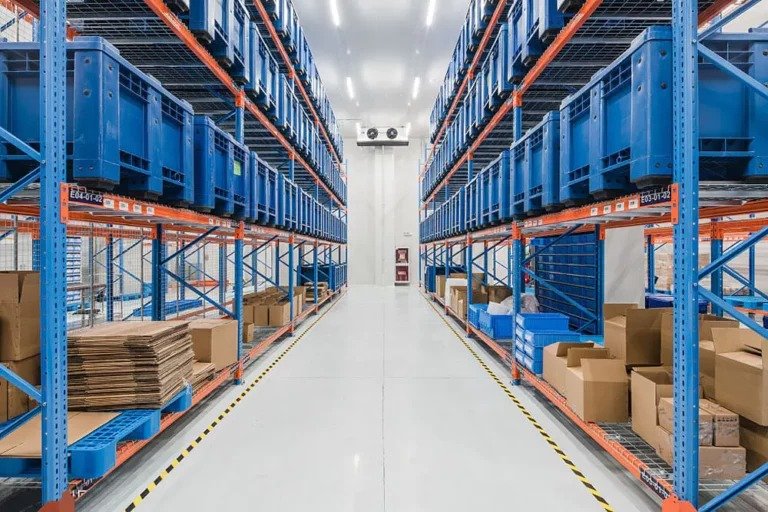Dedication, Reliability, and
Responsiveness to the Customer
As our capabilities, product offerings, and nationwide reach continues to grow, our vision is to become the nationwide leader in turn-key material handling solutions and the largest provider of new & used warehouse racking, all under one roof.

__ The Best in Material Handling Services __
Over 20 Years of Experience in the
Industry!
Warehouse
Liquidations
SR specializes in complete liquidation of all your warehouse pallet racking, forklifts, and any other material handling equipment.

01
Warehouse
Liquidations
SR specializes in complete liquidation of all your warehouse pallet racking, forklifts, and any other material handling equipment.

02
Warehouse
Liquidations
SR specializes in complete liquidation of all your warehouse pallet racking, forklifts, and any other material handling equipment.

03
Warehouse
Liquidations
SR specializes in complete liquidation of all your warehouse pallet racking, forklifts, and any other material handling equipment.

04
Warehouse
Liquidations
SR specializes in complete liquidation of all your warehouse pallet racking, forklifts, and any other material handling equipment.

05
Warehouse
Liquidations
SR specializes in complete liquidation of all your warehouse pallet racking, forklifts, and any other material handling equipment.

06
We're There Every Step of The Way

Responsiveness to the Customer
Since 2001, we have been on a mission to provide economic and optimized storage solutions for all warehouse operations, while putting the customer first through reliability, responsiveness, and unparalleled support. Commitment to Customers, Service, Teamwork, Quality, Safety, and Responsibility. These are the core values that our team at Ziglift are proud to represent.
As our capabilities, product offerings, and nationwide reach continues to grow, our vision is to become the nationwide leader in turn-key material handling solutions and the largest provider of new & used warehouse racking, all under one roof.
Responsiveness to the Customer
Since 2001, we have been on a mission to provide economic and optimized storage solutions for all warehouse operations, while putting the customer first through reliability, responsiveness, and unparalleled support. Commitment to Customers, Service, Teamwork, Quality, Safety, and Responsibility. These are the core values that our team at Ziglift are proud to represent.
As our capabilities, product offerings, and nationwide reach continues to grow, our vision is to become the nationwide leader in turn-key material handling solutions and the largest provider of new & used warehouse racking, all under one roof.

Applications

Warehouse Liquidations

Warehouse Liquidations

Warehouse Liquidations

Warehouse Liquidations

Warehouse Liquidations

Warehouse Liquidations
FAQS
Push-back pallet racking systems
Push-back pallet racking consists of high-density structures that eliminate interior aisles and allow up to 4 pallets to be stored by accumulation per channel. They increase warehouse capacity while reducing the surface area occupied by the storage system. Pallets are placed on a set of carts or rollers that are pushed along a series of rails mounted at a slight incline. They get their name from the forklift’s action of pushing back the pallets already in the racking to make room for a new one. The front part of the rack is the lowest part, so when goods are removed, the pallets at the back move forward one position by gravity, leaving the entrance to the channel occupied once again. With this type of racking, loading and unloading takes place in a single working aisle. Therefore, operations follow the LIFO (last in, first out) principle.
Push-back pallet racking consists of high-density structures that eliminate interior aisles and allow up to 4 pallets to be stored by accumulation per channel. They increase warehouse capacity while reducing the surface area occupied by the storage system. Pallets are placed on a set of carts or rollers that are pushed along a series of rails mounted at a slight incline. They get their name from the forklift’s action of pushing back the pallets already in the racking to make room for a new one. The front part of the rack is the lowest part, so when goods are removed, the pallets at the back move forward one position by gravity, leaving the entrance to the channel occupied once again. With this type of racking, loading and unloading takes place in a single working aisle. Therefore, operations follow the LIFO (last in, first out) principle.
Push-back pallet racking consists of high-density structures that eliminate interior aisles and allow up to 4 pallets to be stored by accumulation per channel. They increase warehouse capacity while reducing the surface area occupied by the storage system. Pallets are placed on a set of carts or rollers that are pushed along a series of rails mounted at a slight incline. They get their name from the forklift’s action of pushing back the pallets already in the racking to make room for a new one. The front part of the rack is the lowest part, so when goods are removed, the pallets at the back move forward one position by gravity, leaving the entrance to the channel occupied once again. With this type of racking, loading and unloading takes place in a single working aisle. Therefore, operations follow the LIFO (last in, first out) principle.
Push-back pallet racking systems
Push-back pallet racking consists of high-density structures that eliminate interior aisles and allow up to 4 pallets to be stored by accumulation per channel. They increase warehouse capacity while reducing the surface area occupied by the storage system. Pallets are placed on a set of carts or rollers that are pushed along a series of rails mounted at a slight incline. They get their name from the forklift’s action of pushing back the pallets already in the racking to make room for a new one. The front part of the rack is the lowest part, so when goods are removed, the pallets at the back move forward one position by gravity, leaving the entrance to the channel occupied once again. With this type of racking, loading and unloading takes place in a single working aisle. Therefore, operations follow the LIFO (last in, first out) principle.
Push-back pallet racking consists of high-density structures that eliminate interior aisles and allow up to 4 pallets to be stored by accumulation per channel. They increase warehouse capacity while reducing the surface area occupied by the storage system. Pallets are placed on a set of carts or rollers that are pushed along a series of rails mounted at a slight incline. They get their name from the forklift’s action of pushing back the pallets already in the racking to make room for a new one. The front part of the rack is the lowest part, so when goods are removed, the pallets at the back move forward one position by gravity, leaving the entrance to the channel occupied once again. With this type of racking, loading and unloading takes place in a single working aisle. Therefore, operations follow the LIFO (last in, first out) principle.
Push-back pallet racking consists of high-density structures that eliminate interior aisles and allow up to 4 pallets to be stored by accumulation per channel. They increase warehouse capacity while reducing the surface area occupied by the storage system. Pallets are placed on a set of carts or rollers that are pushed along a series of rails mounted at a slight incline. They get their name from the forklift’s action of pushing back the pallets already in the racking to make room for a new one. The front part of the rack is the lowest part, so when goods are removed, the pallets at the back move forward one position by gravity, leaving the entrance to the channel occupied once again. With this type of racking, loading and unloading takes place in a single working aisle. Therefore, operations follow the LIFO (last in, first out) principle.
Get Free Quote
Leave us your information and one of our experts will assist you
Dedication, Reliability, and
Responsiveness to the Customer
At Suhong, We turn complex Into Simple! Follow the following 3 steps to start today!

Tell Us What You Need
Tell us as specific as possible of your needs, provide the drawing, reference picture and share your idea.

Get Solution & Quote
We will work on the best solution according to your requirements and drawing, the specific quote will be provided within 24 hours.

Approve for Mass Production
We will start mass production after getting your approval and deposit, and we will handle the shipment.
Copyright © 2024 SR, S.A. All Rights Reserved


